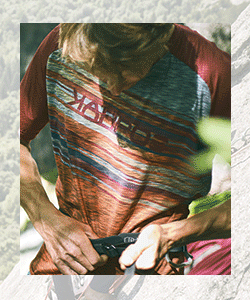How to Reduce Interscapular Pain or Scapular Instability ?

Persistent pain between the shoulder pains, or interscapular pain, may arise from a number of varying causes. Especially while climbing. The scapula is the bone that connects the humerus (upper arm bone) with the clavicle (collar bone) on either side of the body.
The intrinsic muscles of the scapula include the subscapularis, teres minor, supraspinatus, and infraspinatus, all of which make up the rotator cuff. The major muscles surrounding the scapula that make up the interscapular region include the rhomboids, trapezius, and levator scapulae.
The rhomboids are two quadrate-shaped muscles that originate from the lower cervical vertebrae and upper thoracic vertebrae and attach to the medial border of the scapula. The rhomboids work to retract and rotate the scapula downwards.

The trapezius muscle extend from the occipital bone of the skull to the lower thoracic vertebrae and attach to the scapular spine. Its action is to elevate and rotate the scapula upwards. Likewise, the levator scapulae run from the upper cervical vertebrae to the superior portion of the medial border of the scapula and works to elevate the shoulder blades.
Causes of interscapular pain
One of the common causes of interscapular pain may be due to a muscle strain of one of the muscles described above from poor posture, lifting, or twisting motions from activities such as golf or tennis. Other causes may include trauma such as dislocations or rotator cuff tears, cervical or thoracic herniation, arthritis, heart conditions, cancer, gallbladder disease, scoliosis, or gastroesophageal acid reflux.
Treatment
Treatment begins by identifying possible underlying causes contributing to the pain between the shoulder blades. Poor posture occurs when the head is forward and shoulders are rounded. This stretches the rhomboid muscles excessively and causes the muscle to weaken.
Correcting poor posture by taking frequent breaks from sitting, bringing your shoulders down and away from the ears, as well as evenly distributing your body weight to all sides may help relieve upper back soreness.
Active release, moist heat therapy, and intramuscular stimulation with a physiotherapist are effective ways to release tension in the back muscles. Consult a physician or specialist to assess for gastrointestinal, pulmonary, and cardiac-related conditions as they may cause referred pain in the upper back region.
More about this topic and an hang just right !










